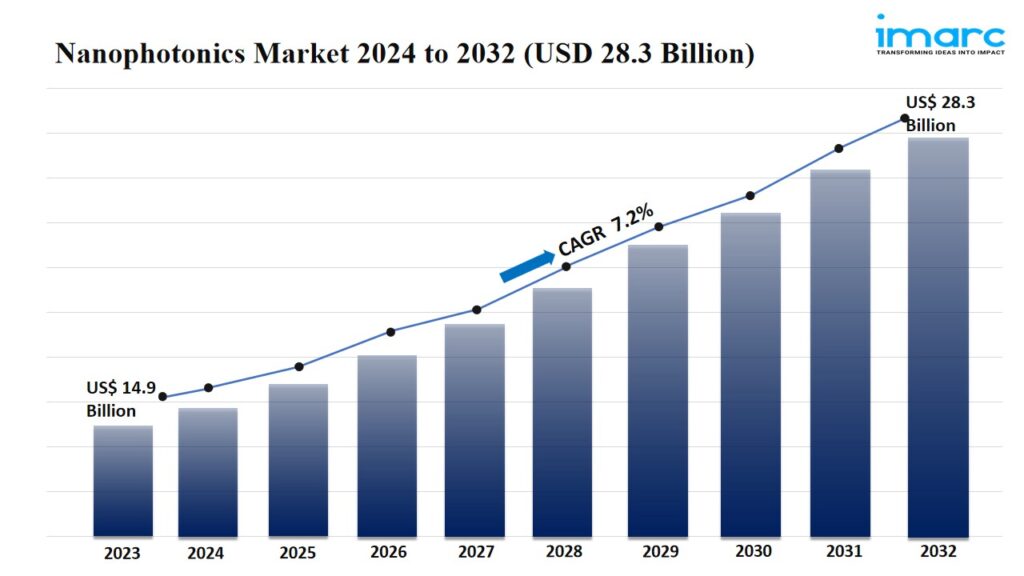
Global Nanophotonics Industry: Key Statistics and Insights in 2024-2032
Summary:

Industry Trends and Drivers:
Traditional electronic communication systems are reaching their limits in terms of speed and efficiency, encouraging the shift toward optical technologies, where nanophotonics plays a pivotal role. By utilizing light for data transmission instead of electrical signals, nanophotonics enables considerably higher bandwidth and lower latency, which are essential for modern applications like cloud computing, streaming services, and online gaming. Additionally, the growing deployment of 5G networks and the push for ultra-fast broadband services are catalyzing the demand for nanophotonic technologies in fiber-optic communications. Businesses and individuals alike are requiring more rapid and efficient data transfer, which is driving the demand for nanophotonics to support the infrastructure for high-speed internet, data centers, and telecommunication networks.
Modern devices, such as smartphones, tablets, televisions, and laptops, are utilizing advanced displays that require superior performance in terms of resolution, brightness, and energy efficiency. Nanophotonics, through applications like organic light-emitting diode (OLEDs), quantum dots, and micro-light emitting diodes (LEDs), enables enhanced color accuracy, better contrast ratios, and lower power usage, all while maintaining a sleek and lightweight design. These advancements meet the rising user expectations for high-quality visual experiences, particularly in augmented reality (AR) and virtual reality (VR) systems, where immersive, life-like displays are critical. The rising user demand for high-definition screens and energy-efficient electronics is encouraging manufacturers to integrate nanophotonic components into their devices.
Nanophotonics is revolutionizing the biomedical sector, offering breakthroughs in medical diagnostics, imaging, and treatment methods. In diagnostics, nanophotonic technologies are being utilized in biosensing applications to detect diseases at an early stage with higher sensitivity and precision. These technologies are proving invaluable in the detection of cancer and other life-threatening conditions, enabling real-time, non-invasive diagnostics. In imaging, nanophotonics allows for superior resolution in techniques, including optical coherence tomography (OCT), which is widely used in ophthalmology and other medical fields. The ability to control light at the nanoscale is also enabling more targeted and effective therapies, such as in photothermal and photodynamic cancer treatments.
Request PDF Sample for more detailed market insights: https://www.imarcgroup.com/nanophotonics-market/requestsample
Nanophotonics Market Report Segmentation: